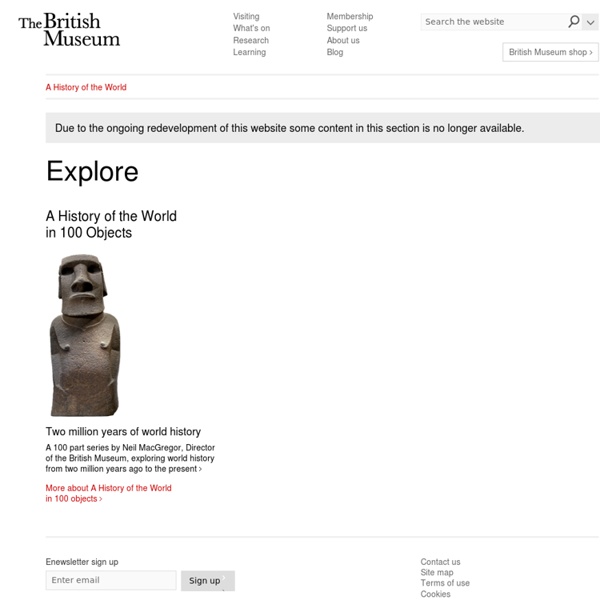



British Museum shop online Two hoards and one unknown Viking ruler Ian Richardson, Portable Antiquities and Treasure, British Museum The saying goes that one waits an eternity for a London bus to arrive, only for two to eventually show up at the same time. Dot Boughton, Finds Liaison Officer (FLO) for Lancashire and Cumbria, is probably beginning to feel that the same rule applies to Viking silver hoards. It was only in April of this year that a hoard of over 90 coins and hacksilver from Barrow-in-Furness, Cumbria was reported to Dot. But no sooner had the coroner concluded his inquest into the Barrow case than Dot was on the phone to our office again with news of an even larger hoard. A piece of jewellery from the Silverdale Viking hoard When the finder’s photographs were sent through to us, we knew this new hoard from Silverdale in Lancashire, was going to be one of the major enterprises of the year for us and our colleagues. Among the many stand-out objects is a coin type none of us had seen before. The Silverdale Hoard Like this: Like Loading...
British Museum Guggenheim Collection Édouard Manet, Before the Mirror (Devant la glace), 1876. Oil on canvas, 36 1/4 × 28 1/8 inches (92.1 × 71.4 cm). Solomon R. Guggenheim Museum, New York, Thannhauser Collection, Gift, Justin K. Thannhauser 78.2514.27 Thannhauser Collection Ongoing Justin K.
Winter Wonderland 2011 - Official Website Galleries The Museum is arranged into four main galleries – the Moving Toys Gallery, the Creativity Gallery, the Childhood Galleries and the Front Room Gallery. Download a map of the Museum (773KB .pdf) Moving Toys Gallery The Museum's Moving Toys Gallery is divided into four sections – Pushes and Pulls, Springs and Cogs, Circuits and Motors and Look See. Find out more Creativity Gallery The Museum's Creativity Gallery is divided into four sections – Imagine, Be Inspired, Explore and Make it Happen. Find out more Childhood Galleries The Childhood Galleries are arranged into the following themes: Babies, Home, What We Wear, Who Will I Be? Find out more Front Room Gallery The Front Room showcases the Museum's community projects, which involve established and emerging artists working with community groups. Find out more
Visit us Entry is free (There is a charge for some temporary exhibitions) Opening times Last Friday of the month open until 22.30 for Lates, excluding December. The Museum is open every day, including Sundays and bank holidays, but closed 24-26 December. The Museum's step-free entrance is on Exhibition Road. Keep up to date at NHM_Visiting on Twitter Visiting our Museum at Tring? For your security, most areas of the Museum are protected by CCTV. On entry to the Museum your bags and other personal items will be inspected. We apologise for any inconvenience caused. What's on From the latest gallery highlights, daily activities and films to special exhibitions and events, find out what’s on for visitors. Getting here There are many ways to reach us. Temporary exhibitions Explore nature, science, conservation and artistic interpretation in our temporary exhibitions. Booking Find out about booking information for our events and exhibitions. Galleries Floor Plans Parents' survival guide Bringing the kids? Access guide
the National Gallery John Wilmerding Collection | 14 Martin Johnson Heade (1819-1904), Still Life with Roses, Lilies, and Forget-Me-Nots in a Glass Vase, 1869, oil on canvas, John Wilmerding Collection The dramatic composition of the white lilies against the dark background creates an ominous, almost surreal mood, not unlike that found in Heade’s pictures of thunderstorms from the same period. In addition, the palpable vitality of the flowers suggests they are moving, foreshadowing the animated qualities of the artist's tropical orchid subjects of the early 1870s. Martin Johnson Heade, Cattleya Orchid and Three Brazilian Hummingbirds, 1871, oil on wood, National Gallery of Art, Gift of The Morris and Gwendolyn Cafritz Foundation
Musée d'histoire naturelle Un article de Wikipédia, l'encyclopédie libre. Le musée d’histoire naturelle de Londres (Natural History Museum) est l'un des trois grands musées installés le long de Exhibition Road, dans le quartier de Kensington à Londres (les deux autres sont le Science Museum et le Victoria and Albert Museum). Il accueille des collections de sciences de la vie et de la terre (environ 70 millions de spécimens). Rempli des trouvailles de l'empire colonial, il compte notamment les collections apportées par l'explorateur James Cook et le naturaliste Charles Darwin. Description[modifier | modifier le code] Le musée est notamment connu pour son hall d’entrée (Central Hall) que domine le squelette d’un diplodocus et pour l’exposition de squelettes de dinosaures. Ce musée abrite cinq collections majeures dans les domaines suivants : – botanique ; – entomologie ; – minéralogie ; – paléontologie ; – zoologie. Histoire[modifier | modifier le code] Le musée est resté un département du British Museum jusqu’en 1963.